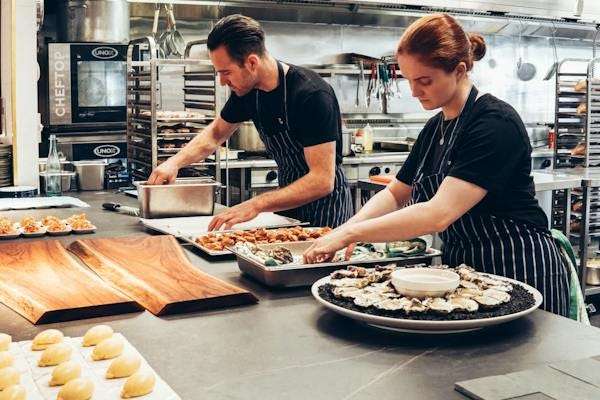The Middle East’s food and beverage industry is a melting pot of flavors, traditions, and innovation. This report delves into the key trends, challenges, and opportunities shaping the region’s culinary landscape.
Flavorful Horizons: An In-depth Analysis of the Middle East Food and Beverage Industry
1. Market Overview:
- The Middle East’s food and beverage industry encompasses a wide range of sectors, including agriculture, food processing, retail, and hospitality.
- The region’s diverse culinary heritage, influenced by Arab, Persian, Turkish, and other cultures, contributes to a rich tapestry of flavors and cuisines.
2. Growth Drivers:
- Population growth, urbanization, and rising disposable incomes are driving increased demand for food and beverage products across the Middle East.
- Changing consumer preferences, influenced by globalization and health consciousness, are leading to a growing demand for organic, natural, and healthier options.
3. Regional Variations:
- The Middle East is a diverse region with distinct culinary traditions and preferences varying from country to country.
- Gulf countries like the UAE and Saudi Arabia have a vibrant food scene with a mix of traditional dishes and international cuisine, driven by expatriate communities and tourism.
- Levantine countries like Lebanon and Jordan are known for their mezze (small dishes) culture and flavorful Middle Eastern cuisine, while North African countries like Morocco and Tunisia boast aromatic tagines and couscous.
4. Key Players:
- The food and beverage industry in the Middle East is characterized by a mix of multinational corporations, local players, and family-owned businesses.
- Global giants such as Nestlé, Coca-Cola, and PepsiCo have a significant presence in the region, alongside regional players like Almarai, Savola Group, and Emirates Snack Foods.
5. Challenges:
- Despite its growth potential, the food and beverage industry in the Middle East faces several challenges, including water scarcity, food security concerns, and geopolitical instability.
- Climate change, environmental degradation, and water scarcity pose additional challenges to agriculture and food production in the region.
6. Opportunities:
- Despite challenges, the Middle East presents immense opportunities for growth and investment in the food and beverage industry.
- Rising consumer demand, expanding urban markets, and a growing middle class are driving increased investment and innovation in food processing, distribution, and retail.
7. Future Outlook:
- The future of the food and beverage industry in the Middle East is promising, driven by factors such as demographic trends, urbanization, and technological innovation.
- Collaboration between governments, private sector stakeholders, and civil society will be essential to address challenges and unlock the full potential of the Middle East’s food and beverage sector.
Conclusion: The food and beverage industry plays a crucial role in the Middle East’s economic development, cultural heritage, and social well-being. By understanding key trends, challenges, and opportunities, stakeholders can navigate the complexities of the market and contribute to sustainable growth and prosperity across the region.



